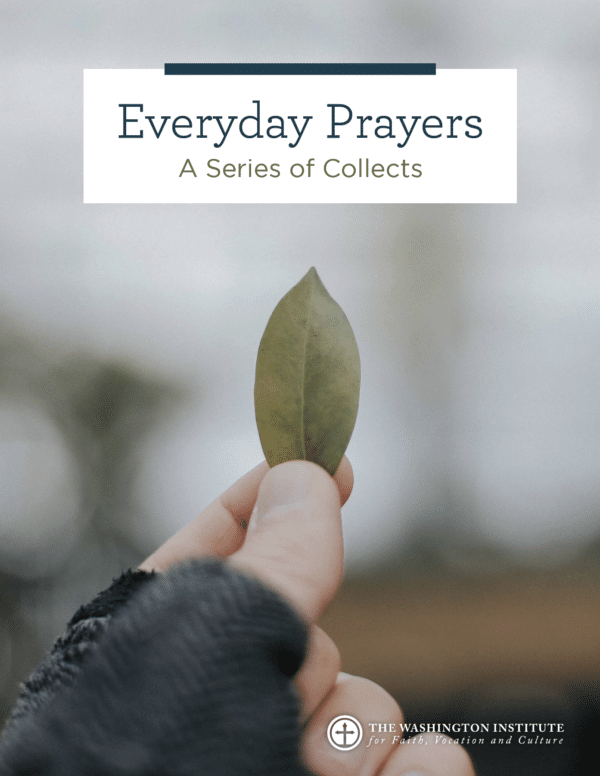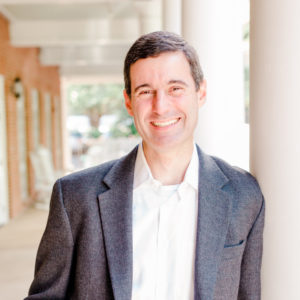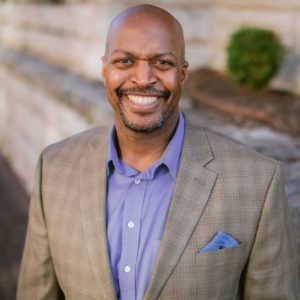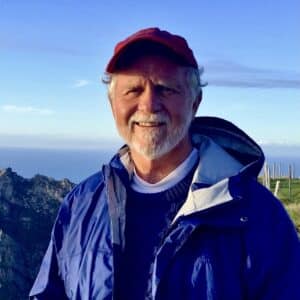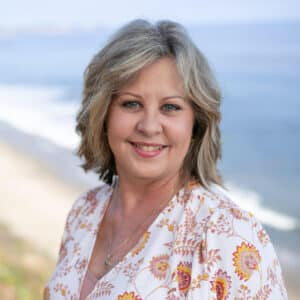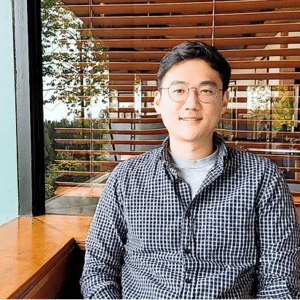I remember a bad experience I had when making an insurance claim for my mother-in-law. While shopping in a grocery store, she accidentally stepped on a slippery floor that was not properly guarded and injured herself. Speaking with the insurance agent on the phone was a nightmare. The agent seemed to be more interested in hurrying to dismiss and end the claim than genuinely caring for the person who had been injured.
Recently, I wrote about the meaning of our vocation in the world of creation—suggesting that our vocation was meant to reflect our identity and calling as the Lord’s vice-regents, that we are called to care for and develop the potential of creation. We work for the good of the world, filling the world with the beauty and glory of the Lord.
Alas, a quick look around reminds us how different that vision is from our daily reality. In “Where Is the Love?” The Black Eyed Peas sing of the deeply troubled state of our current world:
People killin’, people dyin’
Children hurtin’, hear them cryin’
Can you practice what you preach?
And would you turn the other cheek?
Father, father, father, help us
Send some guidance from above
‘Cause people got me, got me questioning
Where is the love?
We see the brokenness of humanity manifested seemingly everywhere in our world today, in both public and private realms, both globally and locally. Nor is this unique to today. As the 17th century poet John Donne said in An Anatomy of the World, grieving the world’s selfishness in the midst of the bubonic plague: “‘Tis all in pieces, all coherence gone.”
What has happened to God’s original beautiful and harmonious design of a covenantal cosmos, one where we carry our responsibility of vocational stewardship by filling the world with praises of the glorious grace of our Lord?
As we come to Genesis 3, we see the covenantal cosmos broken and fallen. Humanity, created in God’s image, enjoyed everything in the garden, able to explore its full possibilities, yet was told to guard the tree of the knowledge of good and evil—to refrain from consuming its fruit, with severe consequence if not obeyed.
What was so special about the tree? Tim Keller says,
“The answer is probably nothing, per se. There was likely nothing magical or unusual about the tree or the fruit itself—the tree was a test. God was saying, ‘I want you to do something for me, not because you understand why, not because you can see whether it would benefit or disadvantage you. I want you to obey me simply because of who I am, simply because you love me and trust me more than anything else.'”[1]
This was God’s original design—a world to be fully enjoyed and unfolded for its full potential but within the proper order of relationship that would keep God’s revealed will at the very center of the hearts of humanity.
But in Genesis 3, humanity tested God’s design and questioned the truthfulness of his words. Humanity ventured into an unholy curiosity, wondering, “Did God really say that?” and “Did God really mean what he said?” These questions led Adam and Eve to consume the fruit of the tree instead of guarding it. The core issue was not consuming the fruit of the tree but their hearts’ innate desire to live independently of God’s revelation, to decide right from wrong on their own terms, bringing cosmic plague—”sin”—into God’s good world.
With this, the design of the world became broken and fragmented. After their sin Adam and Eve become unable to respond properly to God or his word. They run and hide from his presence. They engage in the blame game, shifting their responsibility first to one another, then ultimately to God, himself. The harmonious design for relationships in the world—God to people, people to people, and people to planet—was disfigured and fragmented, bringing cosmic incoherence in the place of order.
Because of this, the Lord tells humanity that our work—which was meant to harmonize life and worship—will no longer be joyful, but instead painful. The creation will no longer cooperate with the work of our hands but will instead fight us; it will produce thorns and thistles. This is the story of the Fall, the world that “is” for us now.
Just as the fall impacted Adam’s vocation of farming, we see the consequences of the Fall expressed in the vocational lives of people throughout history. Work has become disconnected from its true purpose. Vocation has become exploitative of people, places, and planet. Balance has been lost.
In creation, God gave parameters to limit the scope and scale of our work—for example, that we are called to work six days but rest on the seventh day. This rhythm of work and worship would keep work in its proper place and purpose and keep God as the center of who we are and what we do. Yet we see again and again the Old Testament prophets speaking against a people who have become selfish, engaging their vocations not for the mutual good of the world but for economic and social exploitation of others, particularly the poor.
In Isaiah 5:8, the Lord pronounces judgment on the rulers of the people for accumulating wealth in unjust ways:
“Woe to you who add house to house
and join field to field
till no space is left
and you live alone in the land.”
In Israel, all land ultimately belonged to God, and families were not allowed to dispossess others. Even in the unfortunate case that land had to be sold, it was to be redeemed by a kinsman, and if even that were not possible, all land was nonetheless to return to its original owners during the time of Jubilee. Alas, we have no record that such a Jubilee ever actually occurred. Instead, the Lord saw some increasing their wealth by dispossessing the poor and forcing them into lives of permanent servitude.
Even in our modern world, we see the Fall expressed everywhere. When Friedrich Nietzsche wrote, “God is dead,” he wrote not with the intention to deny the existence of God but to warn the world of disastrous consequences of a society without a firm moral foundation. We live in exactly that world today, a world detached and disconnected from the revelation of the Creator. The consequence of this narrative is that the world has become a place void of meaning and morality, a place where the meaning of our lives and vocations is disconnected from the true meaning of vocation.
The disconnection continues in our vocations today in the modern economy. Milton Friedman, in his 1970 New York Times essay, “The Social Responsibility of Business Is to Increase Its Profits,” argued that a corporation’s sole social responsibility is to increase profits for its shareholders. To do otherwise, e.g., to care for the well-being of the community, he argued, was socialism and a deviation from the true purpose of the corporation.
The fruit of Friedman’s approach has certainly been explosive economic growth. Yet, it has also been disastrous for the people and places of the world. Recently, I talked to a friend who was investing in a particular company. I looked at the company’s earnings, annual reports, and its history. None of the stories about the way they do business with their employees, clients, and contractors made good moral sense to me, and the numbers reflected that. So, I asked my friend, “Why are you investing in this company?” He replied, “Well, Paul, this company is too big to fail. Right now, their share price is down because of what has been going on, but it will come back. There is no way the government will let this company fall.”
In our modern world of capitalism, the narratives of Nietzsche and Friedman found their way into our understandings of vocations—that as long as we maximize profits, even at the expense of the people, places, and the planet of our world, it doesn’t matter. But was Friedman correct, biblically? Is maximization of personal profit over against and at the exclusion of every other goal a biblical imperative? Is it true that anything else is definitionally socialism?
Listening to my friend reminded me of my visit to France last year. As my wife Esther and I visited the Palace of Versailles, we found ourselves overwhelmed standing before the golden-armored building’s glorious façade. Entering the palace itself—visiting the Grand Chapel, the Hall of Mirrors, the Royal Chapel, and the countless other rooms filled with stunning art and decorations—was an unforgettable, once-in-a-lifetime experience. Then, there were the beautiful and majestic gardens, with a long canal running through the center.
And yet, as we marveled at the garden’s beauty and grandeur, I found myself wondering, how could one man have it all? Louis XIV tried to bring all things to himself. He brought the nobles into the palace and positioned himself at the heart of all activities and attention, not just in Versailles but in all of France. He attracted the best talent from across Europe, bringing in the best minds in politics, economics, arts, music, science, military, architecture, and culture to make the Palace of Versailles and France the epicenter of the world. He even called himself the Sun King (le Roi Soleil). As the sun gives life to all things, Louis XIV made himself to be that—like God—drawing all things to himself under his absolute monarchy for the glory of Versailles.
Yet, while in France, we also visited a national archives museum in Paris, where I read a different story of Versailles. While Louis XIV and his successors were building an empire and entertaining themselves, the people were suffering, and the burden to keep Versailles running drove the country to a breaking point of financial collapse. In the end, the collapse came with the French Revolution. Those who had borne burden of the extravagant lifestyle of the French monarchs rose to end the glory of Versailles, never to be continued.
Walking out of the museum, thinking deeply about both the glory of Versailles and its fall during the French Revolution, I tried to make sense of what I saw. As we kept walking on the streets of Paris, I truly fell in love with the city. The city’s art and architecture, with beautifully decorated gardens everywhere in the midst of the city, came together and made me wonder if these could be glimpses of what the true garden-city our Lord meant to create through our vocations in the world of creation—in the world that was meant to be.
Yet beneath the city’s beauty, signs of brokenness were visible everywhere—homeless people on the streets, refugee families with babies seeking assistance, and crowds gathering for riots and protests—reminding me that this is the world that “is” at the moment, beautiful, but also broken and deeply wounded by the cosmic plague of sin. Seeing both the beauty and brokenness of the city, I questioned where hope is in the world that has become, the world that currently “is.”
Going back to Genesis 3, we see glimpses of hope. In verse 1, the serpent is described as “crafty” using the Hebrew word arum. Later, in verse 14, God speaks to the serpent—through whom temptation entered the world—saying “Because you have done this, cursed are you…” The Hebrew word for “cursed” here is arur. Through this wordplay between arum and arur, the author of Genesis hints at God’s grand redemptive plan to defeat and overthrow the serpent’s crafty scheme, the one that led the world in the wrong direction.
Then, when Adam and Eve are banished from the Garden of Eden, the Lord clothes them with garments made of skins—life that had shed blood to keep them clothed and warm. These are signs of hope which we see in Genesis 3, especially verse 15, hinting that a redeemer will come in the next story to bruise the head of the serpent and to redeem the world with his own life given for the world.
Now this year, driving home, I saw the beautiful Vancouver skyline filled with ashes from the eastern part of Canada, specifically the Jasper region, one of the most beautiful places in the country, if not the world. I remember standing on the majestic Columbia Icefield in Jasper, riding a big vehicle to the heart of the icefield, marveling at its beauty and glory. Seeing the cities, towns, trees, homes, and communities of Jasper in the news devastated by the fires has been devastating. Seeing stories of Los Angeles today, likewise.
Looking at the sky that was meant to be clear but darkened by the ashes of fire, along with hearing of wars, global conflicts, upcoming elections, I repeated the words of The Black Eyed Peas, “Where is the Love?” “Where is true hope in the world?”
That same day, our world also launched the Summer Olympics in Paris, France. Despite all the controversial opening scenes that made viewers frown and groan at the wounded images of the world, Céline Dion, a French Canadian artist, surprised the world by returning to the stage after a long period of health struggles, which she shared in the documentary film I Am: Céline Dion. That night, on a stage set in the heart of the Eiffel Tower, the landmark of Paris, she sang the song Hymne à l’amour by French artist Édith Piaf, surprising and dazzling the whole world with her beautiful voice and majestic presence.
Hymne à l’amour speaks of an unfulfilled love and shattered hope. In the lyrics, Édith longs and mourns for her love, Marcel Cerdan, a former French boxer who was killed in the crash of Air France Flight 009 on his way from Paris to New York to see her on October 28, 1949. Toward the end of the song, the lyrics speak of hope, envisioning a day of redemption where there will be no more problems and no more tears for those who put their hope in the Lord.
That night, Céline Dion sang beautifully and gracefully for the world to inspire hope in our world against the dark skies of Canada, hope against the deep wounds of the world, and hope against the painful struggles of her own life. In that moment of sacramental beauty of love and hope, expressed through the voice of Céline Dion, I felt reminded that despite the world where all coherence feels gone, there still is the grace of the Lord. In her voice, I saw glimpses of grace, the true love and true hope that are to be unfolded in the vocation of the Redeemer who has come to the world of his own to give his life for the redemption of the world. This is the story of hope, the story of redemption, in the world of the Fall, the Fall which is only the second chapter, not the end, of the story.
[1] Keller, Timothy, and Katherine Leary Alsdorf. Every Good Endeavor: Connecting Your Work to God’s Work. Penguin Group, 2012, 84.
